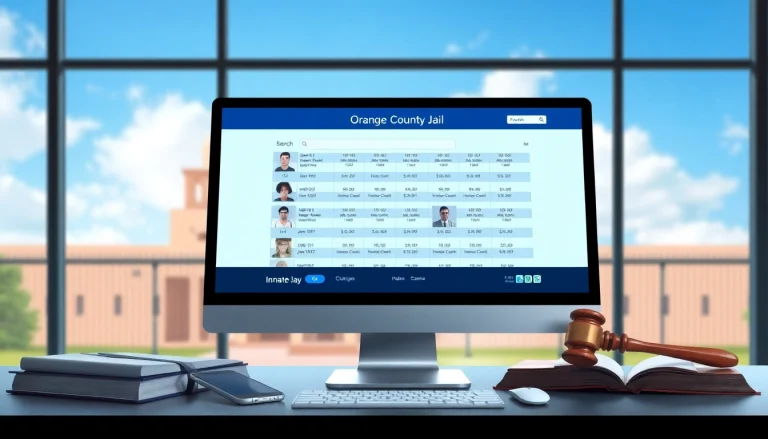
Understanding Trademark Registration Procedures
In the ever-evolving landscape of global business, protecting intellectual property has become paramount. One fundamental method of safeguarding your brand identity is through trademark registration. This article delves deeply into the intricacies of trademark registration in India and the US, exploring the processes, laws, and distinctions that exist in both jurisdictions. Understanding these fundamentals is essential for businesses looking to solidify their brand presence and protect their interests. For comprehensive insights on trademark registration in India and US, this guide will be invaluable.
Overview of Trademark Registration in the US
In the United States, trademark registration is governed primarily by the Lanham Act, which provides a robust framework for protecting trademarks that signify goods and services. To initiate the registration process, an application must be filed with the United States Patent and Trademark Office (USPTO). The process involves several key steps:
- Conducting a Trademark Search: Before filing, it’s advisable to search the USPTO database to ensure that a similar trademark does not already exist.
- Submitting the Application: The application must include the owner’s details, a clear depiction of the trademark, the goods or services it will represent, and the filing basis (use or intent to use).
- Examination by USPTO: A trademark examiner reviews the application for compliance with legal requirements and conflicts with existing marks.
- Publication for Opposition: If the application passes initial scrutiny, it is published in the Official Gazette, allowing third parties to oppose the registration.
- Final Registration: If no opposition is received or if opposition is overcome, the trademark is registered and a certificate of registration is issued.
One unique aspect of U.S. trademark law is the requirement to file a Declaration of Use every five years and renew the trademark every ten years.
Overview of Trademark Registration in India
In India, trademark registration is primarily governed by the Trade Marks Act of 1999 and the Trade Marks Rules of 2017. The overall framework is somewhat similar to that of the U.S., but there are distinct procedures and timelines:
- Initial Trademark Search: Like in the U.S., businesses should conduct a search of the Indian Trademark Registry to avoid conflicts.
- Application Filing: The application can be submitted online or offline, and it must specify the trademark, the owner, and the classes of goods/services.
- Examination: Once filed, an examiner assesses the application for conflicts with existing trademarks and compliance with standards.
- Publication: If accepted, the trademark is published in the Trade Marks Journal, providing a 90-day window for third parties to file objections.
- Registration: If there are no objections or if any objections are successfully resolved, the trademark is registered, and a certificate is issued.
In India, registered trademarks do not require renewal until ten years after registration, but timely renewal is crucial to maintain rights.
Key Differences Between US and Indian Trademark Laws
While both the U.S. and Indian systems aim to protect trademarks, several key differences exist:
- Registration Renewal: In the U.S., trademarks must be renewed every ten years, with an additional Declaration of Use every five years, while in India, renewals are required every ten years without interim declarations.
- Opposition Period: The U.S. allows a 30-day opposition period after publication, while India permits a 90-day period post-publication for filing objections.
- Application Basis: U.S. applications can be based on ‘use in commerce’ OR ‘intent to use’. In India, applicants can only file based on actual use or proposed use can later be converted to use.
- Scope of Protection: U.S. trademark law often provides broader protection compared to Indian law, which may take into account factors such as well-known trademarks in opposition cases.
The Importance of Trademark Registration for Businesses
Trademark registration is not merely a bureaucratic process; it serves as a crucial legal tool for businesses, ensuring their brand uniqueness and protecting them in a competitive marketplace.
Protecting Brand Identity in India
In India, achieving trademark registration is vital for establishing brand identity. With a rapidly growing economy and a diverse consumer base, the Indian market’s attractiveness is accompanied by the risk of brand dilution and infringement. Registered trademarks help companies:
- Legally Prevent Unauthorized Use: Once a trademark is registered, the owner can take legal action against anyone attempting to use a similar mark that may confuse consumers.
- Build Customer Trust: Registration lays a foundation of credibility and trust, as consumers generally associate registered trademarks with a legitimate business.
- Enhance Market Value: A registered trademark adds to the business’s overall asset value, often becoming critical during mergers, acquisitions, or sales.
Legal Benefits of US Trademark Registration
Trademark registration in the United States confers several significant legal advantages:
- Exclusive Rights: Registration grants the owner exclusive rights to use the mark in connection with the registered goods or services.
- Nationwide Notice: Registration serves as public notice of ownership, deterring potential infringements from other brands.
- Assistance in Legal Proceedings: A registered trademark is presumed valid, shifting the burden of proof to the defendant in an infringement case, making litigation easier for the trademark owner.
Risks of Not Registering a Trademark
Failure to register a trademark presents various risks for businesses, both in India and the U.S. Some of the most pressing risks include:
- Losing Rights: Without registration, businesses may find it challenging to prove ownership and enforce their rights in case of disputes.
- Increased Vulnerability to Infringement: Unregistered trademarks are more susceptible to unauthorized use by competitors, which could harm brand credibility and market position.
- Difficulties in Brand Expansion: Without a legally protected trademark, companies may struggle to expand into new markets or leverage franchise opportunities as they lack a secured brand identity.
Step-by-Step Process for Trademark Registration
Each jurisdiction has its nuanced processes involving steps that prospective registrants ought to follow closely for success in obtaining trademarks.
Filing a Trademark Application in the US
The trademark application process in the United States can be succinctly summarized into the following steps:
- Pre-filing Trademark Search: Check the USPTO database thoroughly to identify any conflicting trademarks.
- Prepare and File Application: Submit the application online through the USPTO’s TEAS (Trademark Electronic Application System), including all necessary documentation and fees.
- Examination Phase: An assigned examining attorney will evaluate the application for compliance, and may issue an office action if any issues arise.
- Respond to Actions: If an office action is raised, respond promptly with any additional information or amendments needed.
- Publication and Opposition: If approved, the trademark is published, allowing for potential opposition. Should no one object, the mark will proceed to registration.
- Maintain and Renew: Follow up with the required declarations and renewals as stipulated.
Filing a Trademark Application in India
The process in India, while similar in structure, consists of distinct steps focusing on compliance with local laws:
- Conduct a Trademark Search: Search the Indian Trademark Database to identify existing trademarks that are similar.
- Filing the Application: Complete the Trademark application form (Form TM-A) and submit it with the requisite fees either online or physically.
- Examination of Application: The application will undergo examination by a designated authority and will be assigned to an examiner.
- Addressing Objections: If objections arise post-examination, respond with necessary arguments or modifications.
- Publication in the Trade Marks Journal: Post-examination, registered trademarks are published for opposition by third parties.
- Final Registration: In the absence of objections or resolution of any issues raised, the trademark will be registered, and a registration certificate is issued.
- Renew the Registration: Ensure timely renewals every ten years to uphold trademark rights.
International Filing through the Madrid Protocol
For businesses considering global expansion, the Madrid Protocol offers a streamlined process for international trademark registration. This treaty allows trademark owners to file one application to seek trademark protection in multiple member countries. The process involves:
- Filing a Basic Application: Begin by securing a trademark in the home country, which will serve as the basis for the international application.
- Submitting the International Application: File the international application through the national trademark office; this will then be forwarded to the World Intellectual Property Organization (WIPO).
- Examination by WIPO: WIPO examines the application and issues a certificate confirming registration in the requested countries.
- National Examination: Each designated country will review the mark per its laws and regulations. Local objections can lead to refusals.
The Madrid Protocol simplifies the process but emphasizes the importance of understanding each member country’s trademark laws, as enforcement mechanisms may vary.
Common Challenges in Trademark Registration
Despite its importance, trademark registration can be riddled with challenges that applicants face
Misunderstanding the Registration Requirements
One of the most common pitfalls in the trademark registration process is a lack of understanding of requirements. Failure to approach application filings strategically can result in:
- Incorrect Filing: Errors in classifying goods/services can lead to denial.
- Insufficient Documentation: Incomplete documents can hamper the examination process and delay the application.
Working with experienced professionals can help navigate these challenges and ensure compliance with local laws.
Overcoming Rejections in Trademark Applications
Rejections can happen due to various reasons ranging from conflicts with existing trademarks to insufficient distinctiveness. The process of overcoming rejections involves:
- Thorough Examination of the Refusal: Carefully assess the reasons for the denial and any references to existing marks.
- Respond Strategically: Prepare a well-structured response highlighting the uniqueness of the mark or modifying the application where feasible.
In the U.S., successful appeals can sometimes lead to a trademark being granted even after initial rejection.
Responding to Office Actions in Both Jurisdictions
Office actions are formal communications from trademark authorities typically requiring responses or clarifications. Responding effectively involves:
- Timely Response: Both jurisdictions have strict deadlines, failing to meet which can result in abandonment of the application.
- Providing Evidence: Submit additional documentation or arguments supporting the application where necessary.
Understanding the nuances of the legal requirements and being proactive can significantly enhance the chances of successful application outcomes.
Best Practices for Successful Trademark Registration
Implementing best practices during the trademark registration process can increase the likelihood of success. Here are several key strategies to keep in mind:
Conducting a Comprehensive Trademark Search
Before filing a trademark application, conducting a thorough search is crucial. This ensures that:
- Identifying Conflicts: It helps in identifying any existing trademarks that may conflict with your desired mark.
- Assessing Distinctiveness: A comprehensive search can help evaluate whether the trademark is distinctive enough for registration.
This preparatory step can save time and resources by avoiding the filing of potentially infringing applications.
Preparing Documentation for Filing
Proper documentation is key to a successful trademark application. Key considerations include:
- Clarity and Completeness: Complete all application fields accurately and provide detailed descriptions of the trademark usage.
- Professional Guidance: Consulting with legal professionals can help ensure that all required materials and supporting documents are present.
Clear documentation minimizes the risk of delays and rejections during the application process.
Maintaining and Renewing Trademarks in India and the US
Once a trademark is registered, proactive maintenance is essential:
- Timely Renewals: In both jurisdictions, renew trademarks as required to ensure continued protection.
- Monitoring Use: Continuously monitor the market for any potential infringements or unauthorized use of your trademark.
- Maintain Usage: Use the trademark actively in commerce to avoid cancellation for non-use, particularly in the U.S.
Adopting a structured approach to maintenance not only prolongs trademark protection but also reinforces brand identity in the marketplace.
Conclusion
Trademark registration is an essential aspect of protecting a business’s brand identity in both the U.S. and India. Understanding the distinct procedures, benefits, and potential challenges associated with trademark registration is crucial for entrepreneurs and businesses operating in these dynamic markets. By effectively navigating the registration process, implementing best practices, and maintaining vigilance, businesses can secure their trademarks and thrive in a competitive environment. Ensuring proper trademark registration is not just about compliance; it’s about safeguarding the very essence of your brand’s identity.






